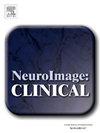Multi-atlas multi-modality morphometry analysis of the South Texas Alzheimer’s Disease Research Center postmortem repository
IF 3.4
2区 医学
Q2 NEUROIMAGING
引用次数: 0
Abstract
Histopathology provides critical insights into the neurological processes inducing neurodegenerative diseases and their impact on the brain, but brain banks combining histology and neuroimaging data are difficult to create. As part of an ongoing global effort to establish new brain banks providing both high-quality neuroimaging scans and detailed histopathology examinations, the South Texas Alzheimer’s Disease Re- search Center postmortem repository was recently created with the specific purpose of studying comorbid dementias. As the repository is reaching a milestone of two hundred brain donations and a hundred curated MRI sessions are ready for processing, robust statistical analyses can now be conducted. In this work, we report the very first morphometry analysis conducted with this new data set. We describe the processing pipelines that were specifically developed to exploit the available MRI sequences, and we explain how we addressed several postmortem neuroimaging challenges, such as the separation of brain tissues from fixative fluids, the need for updated brain atlases, and the tissue contrast changes induced by brain fixation. In general, our results establish that a combination of structural MRI sequences can provide enough informa- tion for state-of-the-art Deep Learning algorithms to almost perfectly separate brain tissues from a formalin buffered solution. Regional brain volumes are challenging to measure in postmortem scans, but robust estimates sensitive to sex differences and age trends, reflecting clinical diagnosis, neuropathology findings, and the shrinkage induced by tissue fixation can be obtained. We hope that the new processing methods developed in this work, such as the lightweight Deep Networks we used to identify the formalin signal in multimodal MRI scans and the MRI synthesis tools we used to fix our anisotropic resolution brain scans, will inspire other research teams working with postmortem MRI scans.
南德克萨斯阿尔茨海默病研究中心尸体库的多图谱多模态形态学分析
组织病理学提供了诱导神经退行性疾病的神经过程及其对大脑的影响的关键见解,但结合组织学和神经影像学数据的脑库很难创建。作为正在进行的全球努力的一部分,建立新的脑库,提供高质量的神经成像扫描和详细的组织病理学检查,南德克萨斯阿尔茨海默病研究中心最近创建了死后存储库,其具体目的是研究共病性痴呆。随着该存储库达到200个脑捐赠的里程碑,100个策划的MRI会话已准备好进行处理,现在可以进行可靠的统计分析。在这项工作中,我们报告了用这个新数据集进行的第一次形态计量学分析。我们描述了专门开发用于利用可用MRI序列的处理管道,并解释了我们如何解决几个死后神经成像挑战,例如从固定液中分离脑组织,需要更新脑地图集,以及脑固定引起的组织对比变化。总的来说,我们的研究结果表明,结构MRI序列的组合可以为最先进的深度学习算法提供足够的信息,几乎可以完美地将脑组织与福尔马林缓冲溶液分离开来。在死后扫描中测量局部脑容量具有挑战性,但可以获得对性别差异和年龄趋势敏感的可靠估计,反映临床诊断、神经病理学发现和组织固定引起的萎缩。我们希望在这项工作中开发的新处理方法,例如我们用于识别多模态MRI扫描中的福尔马林信号的轻量级深度网络,以及我们用于修复脑扫描各向异性分辨率的MRI合成工具,将激励其他研究团队进行死后MRI扫描。
本文章由计算机程序翻译,如有差异,请以英文原文为准。
求助全文
约1分钟内获得全文
求助全文
来源期刊

Neuroimage-Clinical
NEUROIMAGING-
CiteScore
7.50
自引率
4.80%
发文量
368
审稿时长
52 days
期刊介绍:
NeuroImage: Clinical, a journal of diseases, disorders and syndromes involving the Nervous System, provides a vehicle for communicating important advances in the study of abnormal structure-function relationships of the human nervous system based on imaging.
The focus of NeuroImage: Clinical is on defining changes to the brain associated with primary neurologic and psychiatric diseases and disorders of the nervous system as well as behavioral syndromes and developmental conditions. The main criterion for judging papers is the extent of scientific advancement in the understanding of the pathophysiologic mechanisms of diseases and disorders, in identification of functional models that link clinical signs and symptoms with brain function and in the creation of image based tools applicable to a broad range of clinical needs including diagnosis, monitoring and tracking of illness, predicting therapeutic response and development of new treatments. Papers dealing with structure and function in animal models will also be considered if they reveal mechanisms that can be readily translated to human conditions.
 求助内容:
求助内容: 应助结果提醒方式:
应助结果提醒方式:


